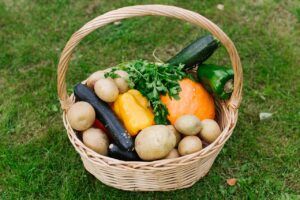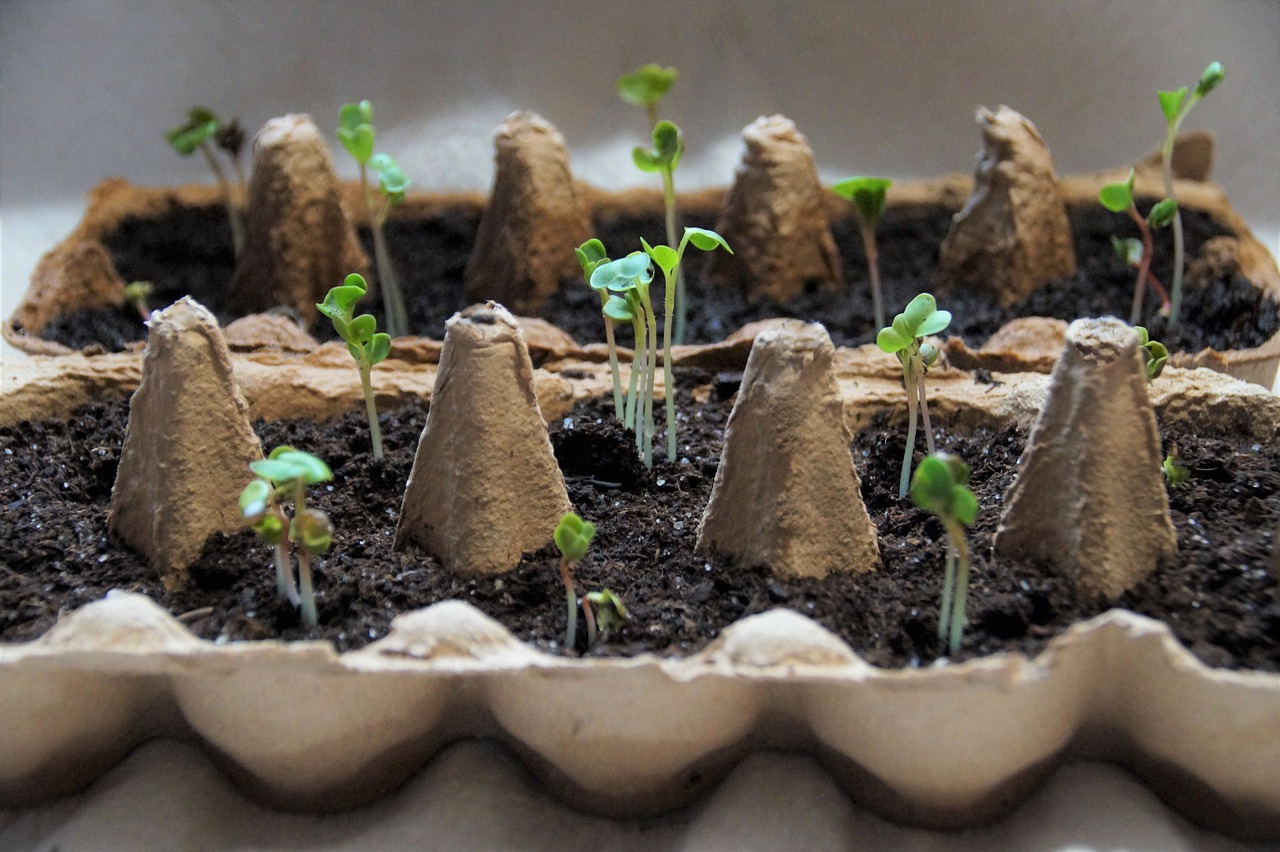
Embarking on the journey of growing your own vegetables from seeds is a rewarding adventure that brings the essence of nature directly into your hands. Whether you’re a seasoned gardener or a greenhorn in the world of horticulture, nurturing plants from their very beginnings offers a profound sense of connection with the cycle of life. In this guide, we’ll walk you through the essential steps to successfully grow vegetables from seeds, from the initial soil preparation to the delicate care needed during germination. Let’s dive into the fascinating realm of seedling cultivation and unlock the secrets to a thriving vegetable garden.
Selecting Seeds for Diversity and Variety
When you opt to grow vegetables from seeds, you open the door to a vast array of plant varieties that might not be available as seedlings at the local nursery or garden center. While pre-grown seedlings offer convenience, they often represent a limited selection curated for mass appeal. By choosing to sow seeds, you empower yourself with the freedom to cultivate a diverse range of vegetables, from heirloom varieties to unique, less common species. This diversity not only enriches your garden but also enhances the overall resilience and adaptability of your homegrown produce.
In the wake of the post-pandemic era, there has been a notable shift in the way people approach their food choices and overall well-being. The desire for organic, wholesome food has surged, leading to a renewed emphasis on non-GMO (Genetically Modified Organism) seeds. As individuals become more conscientious about the source and quality of their produce, choosing non-GMO seeds aligns with the broader movement towards sustainable, healthy living. Growing vegetables from non-GMO seeds not only contributes to your well-being but also ensures that your garden thrives with natural, unaltered vitality.
Soil Preparation: Planting the Seeds for Success
Choosing the Right Medium: To give your seeds the best start in life, it’s crucial to plant them in a sterile seed-raising mixture designed explicitly for this purpose. This ensures a clean and nutrient-rich environment for germination. Selecting a high-quality mixture minimizes the risk of introducing harmful pathogens that could hinder the delicate early stages of plant growth.
Container Selection: Whether you’re cultivating your seeds outdoors or within the comforts of your home, the choice of containers plays a pivotal role. Opt for either large trays for outdoor use or smaller, individual seed-raising “pots” if you’re nurturing your seeds indoors. Using new or sterilized containers ensures a sanitary environment, reducing the likelihood of diseases that can harm emerging seedlings.
Planting Depth and Width: A general rule of thumb for planting seeds is to create a hole that is approximately twice the width and depth of the seed. This provides ample space for root development and ensures the seed is comfortably nestled within its growing environment. However, it’s crucial to note that this guideline might vary based on the specific requirements of each seed.
Seed-Specific Instructions: Always refer to the information provided on the seed packaging for precise instructions. Some seeds require direct exposure to sunlight for germination and should be placed on top of the soil rather than buried. Understanding the unique needs of each seed ensures that you create an optimal environment for successful germination.
Temperature Considerations: Nurturing the Seeds to Life
Understanding Soil Temperature: One common misconception among beginner gardeners is confusing the temperature guidelines on seed packets with climate guidelines. It’s essential to recognize that these recommendations often refer to the ideal soil temperature for seed germination rather than external climate conditions. This distinction becomes particularly evident in seasons like the current one in Australia, where regions may experience variations between cool and dry conditions in the south-east and extended dry heatwaves in the west.
Planting Season vs. Planting Conditions: Take the current Australian spring as an example – it might be the recommended planting season, but it doesn’t guarantee perfect planting conditions. The key lies in understanding soil temperature, which directly influences seed germination. Even in the best planting season, variations in soil temperature can impact the success of your seeds.
Adjusting to Environmental Extremes: Once the seeds have germinated and the seedlings have taken root, they exhibit greater resilience to harsh conditions. However, during the vulnerable germination stage, it’s crucial to monitor and adjust to extreme environmental factors. In excessively hot and dry conditions, consider providing shade or bringing the seedlings indoors to shield them from direct sunlight. Conversely, if the temperatures are too cool, using a heating pad or placing the seeds under grow lights indoors can offer the warmth needed for optimal germination.
Moisture and Humidity Control: Nurturing with Care
Balancing Water Needs: Seeds, like all living beings, require water for germination, but finding the right balance is key. While adequate moisture is essential, excess water can lead to problems such as root rot, stunting the growth of the emerging plant. It’s crucial to strike the right balance, ensuring that the soil is consistently moist but not waterlogged. This delicate equilibrium supports healthy seed development without compromising the integrity of the roots.
Tailoring to Plant Varieties: Different plants have unique moisture requirements, and understanding these distinctions is vital for successful germination. Some plants thrive in consistently moist conditions, while others prefer a drier environment. Tailoring your watering practices to the specific needs of each plant type contributes to an optimal growing environment.
Enhancing Humidity: In regions with lower natural humidity, or for seeds that require higher humidity levels, a simple technique can be employed. After watering, partially sealing off individual pots with plastic wrap creates a microenvironment that retains moisture. This method enhances humidity around the germinating seeds, providing them with the ideal conditions for robust growth.
Troubleshooting Tips and Tricks: Navigating Potential Challenges
Understanding Seed Dormancy: Seeds often undergo a dormant period, typically during the coldest months, where germination is delayed until specific conditions are met. If you’re facing challenges due to a lack of
natural cold temperatures, a workaround involves mimicking this period by placing the seeds in the freezer for a designated time. This process tricks the seeds into emerging from dormancy. Always refer to the instructions on the seed packet for precise guidelines on seed dormancy and the necessary treatment.
Addressing Scarification Needs: Certain seeds have evolved to benefit from scarification, a process where the seed coat is scarred or weakened to facilitate germination. In nature, this may occur through the
digestive process of animals that consume the seeds. For gardeners, replicating this process can be achieved by carefully using sandpaper to create small scars on the seed coat. This allows for better water absorption and encourages successful germination.
Local Insights Matter: While general guidelines provide a solid foundation, it’s essential to recognize the influence of local conditions on seed germination. Local garden centers can be valuable sources of
information, offering insights into current growing conditions, regional challenges, and specific tips tailored to your area. Regularly checking in with these experts ensures that you’re equipped with the most relevant and up-to-date knowledge for successful seed cultivation.
Post-Germination Care: Nurturing the Young Seedlings
Ensuring Balanced Growth: As your seeds successfully germinate, and tiny seedlings emerge, a new set of considerations comes into play. One critical aspect is ensuring that the young plants receive even and balanced exposure to light. Lack of proper light rotation can lead to seedlings leaning towards a light source, resulting in uneven growth or weak, elongated stalks.
Importance of Light Rotation: Regularly rotating the seedlings ensures that each side of the plant receives an adequate amount of light. This practice promotes even development and prevents the seedlings from becoming overly reliant on a single light direction. By gently turning the pots or trays, you encourage straight and sturdy growth, laying the foundation for healthy and resilient plants.
Monitoring Light Intensity: Pay attention to the intensity of the light source as well. Seedlings need sufficient but not overly harsh light. If using artificial lights, maintain an appropriate distance to prevent excessive heat or light stress. Striking the right balance in light exposure contributes to robust seedling growth and sets the stage for successful transplanting.
Transplanting Considerations: Smooth Transition for Stronger Plants
Ease of Transplanting with Jiffy Pots: Once your seedlings have developed strength and resilience, especially when nurtured in jiffy pots, the transplanting process becomes remarkably straightforward. Jiffy pots, designed to break down naturally, can be planted directly into the soil without disturbing the delicate roots. This seamless transition minimizes stress for the plants and ensures a smooth continuation of their growth journey.
Choosing the Right Moment: Timing is crucial when considering transplanting. Waiting until the seedlings have reached a robust stage with well-established roots enhances their ability to adapt to new growing conditions. Keep an eye on the development of the seedlings, ensuring they are sufficiently mature for the transplanting process.
Providing Adequate Space: When transplanting into a larger outdoor space or garden bed, ensure proper spacing between plants. This allows each plant to receive adequate sunlight, nutrients, and room for expansion. Consider the specific spacing recommendations for the particular vegetables or plants you are cultivating to optimize their growth potential.
Cultivating the Seeds of Success
Embarking on the journey of growing vegetables from seeds opens a world of possibilities for both novice and seasoned gardeners. From the meticulous preparation of sterile soil to the careful consideration of temperature, moisture, and light, each step plays a crucial role in the success of your garden.
As your seeds germinate and tiny sprouts emerge, the nurturing doesn’t end; it transforms. Paying attention to post-germination care, ensuring light rotation, and seamlessly transitioning to transplanting are pivotal phases in the plant’s life cycle.
Remember, the joy of growing from seeds lies not just in the destination but in the entire process. It’s a journey of patience, observation, and celebration as you witness the transformation of tiny seeds into thriving plants. Whether you’re drawn to the vast variety of plant options, the assurance of non-GMO choices, or the satisfaction of growing your own organic produce, cultivating vegetables from seeds is a rewarding endeavor.
So, with soil-stained hands and a heart brimming with horticultural enthusiasm, dive into the world of seed gardening. As you witness the first delicate leaves breaking through the soil, you’ll realize that, in your hands, you hold the power to cultivate not just vegetables but a vibrant, flourishing garden.
Happy gardening!

